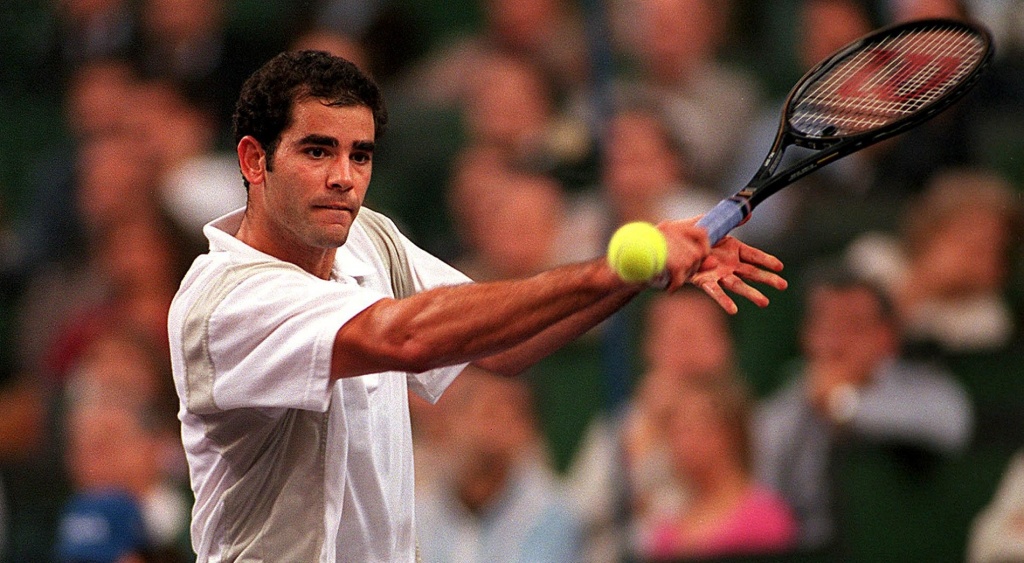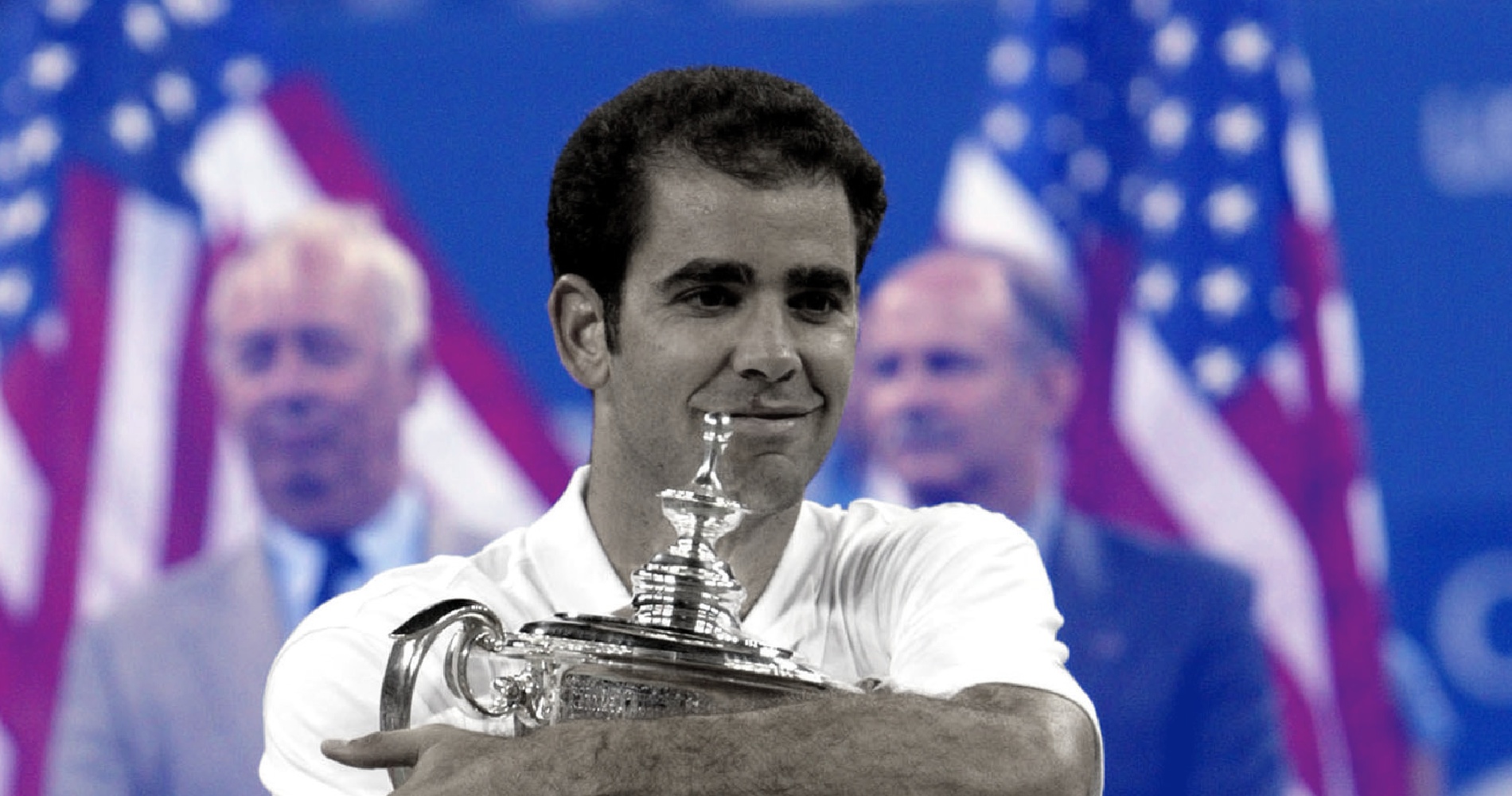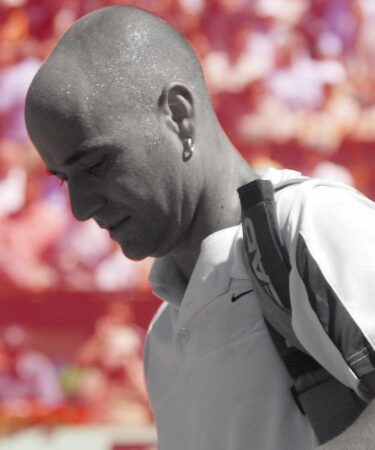November 28, 1999: The day Pete Sampras won the ATP Finals for the fifth time
Every day, Tennis Majors takes you back to one of the most iconic moments in tennis history. On this day in 1999, Pete Sampras equaled Ivan Lendl’s record for the most season-ending ATP Finals titles won
 Pete Sampras
Pete Sampras
What happened exactly on that day?
On this day, November 28, 1999, Pete Sampras won the season-ending ATP Finals for the fifth time, tying Ivan Lendl’s record at the time. To achieve this feat, he defeated Andre Agassi in the final (6-1, 7-5, 6-4), although his long-time rival had outplayed him during the round-robin phase (6-2, 6-2).
For Sampras, it was a great way to finish a complicated year, during which he had to skip both the Australian Open and the US Open because of injuries and had lost his world No 1 spot. As for Agassi, who was enjoying the best season of his career, it was a reminder that his old rival would always be there to challenge him in the big events.
The players: Pete Sampras and Andre Agassi
• Pete Sampras: The American chasing Emerson’s record but struggling in 1999
Pete Sampras, born in 1971, had dominated the game in the 1990s. After winning a first Grand Slam at the 1990 US Open (where he became the youngest champion of all-time, edging his rival Andre Agassi in the final, 6-4 6-3 6-2), he became world No 1 in April 1993. He then ended the next six years (1993-1998) as world No 1, setting a record that would remain unbeaten until Novak Djokovic broke the same in November 2021. His serve-and-volley game was particularly lethal on the All England Club grass, where he collected five Wimbledon titles between 1993 and 1998, holding a 39-1 record (the only man to beat him there was Richard Krajicek, in the 1996 quarter-finals, 7-5, 7-6, 6-4).
Sampras had triumphed four times at the US Open (1990, 1993, 1995, 1996) and twice at the Australian Open (1994, 1997), being now only two titles away from Roy Emerson’s record of 13 Grand Slam crowns. To top that, the American had won the Masters Cup four times (1991, 1994, 1996, 1997) and had accumulated a total of 57 titles in his career. At the time, he had just tied Lendl’s record of the longest time spent at the world No 1 spot (270 weeks).

Sampras would surely have been called the ‘Greatest of all Time’ had it not been for his obvious weakness on clay: his best performance at Roland-Garros was a semi-final appearance in 1996 (lost to Yevgeny Kafelnikov, 7-6, 6-0, 6-2), and he had not reached the second week of the tournament since then.
In 1999, he paid the toll for all his earlier efforts, and he played far below his usual standards during the first half of the season, but rebounded at the All England Club, where he prevented Andre Agassi from becoming the first player since Bjorn Borg to win Roland-Garros and Wimbledon the same year, defeating his rival in the final (6-3, 6-4, 7-5). After a great summer, where he claimed the title in Cincinnati (defeating Pat Rafter in the final, 7-6, 6-3), a back injury forced him to withdraw from the US Open. He had recovered just in time to play only one tournament, the Paris Masters 1000, before the Masters Cup, where he arrived as world No 5, his lowest ranking at the year-end event since 1991.
• Andre Agassi: The American who was enjoying a renaissance on the tennis circuit
Andre Agassi, the Las Vegas Kid, was also a tennis legend. He had turned professional in 1986 and soon became one of tennis’ biggest superstars, thanks not only to his amazing tennis skills but also his interesting outfits, including the iconic denim shorts and the pink bike shorts (worn as underlayer).
Taught by his father and bred at the Nick Bollettieri Academy, his game relied on a great return (the best of its time) and on hitting the ball on the rise on both sides with incredible power, which was revolutionary at the time and then copied by generations of tennis players. After finishing runner-up three times, once at the 1990 US Open and twice in Roland-Garros (1990 and 1991), he won his first Grand Slam tournament at Wimbledon in 1992, defeating big-serving Goran Ivanisevic in the final (6-7, 6-4, 6-4, 1-6, 6-4). This title was followed by the 1994 US Open and the 1995 Australian Open, the only time he beat his long-time rival, Sampras, in a Grand Slam final (4-6, 6-1, 7-6, 6-4).

Agassi became world No 1 shortly after, on April 10, 1995, for 30 weeks. In 1996 and 1997, despite winning the gold medal claimed at the 1996 Atlanta Games, he had a very hard time on and off the court and his ranking dropped as low as No 141 in the world. Displaying great humility, he went back to play on the ATP Challenger Tour at the end of 1997 to regain confidence.
He slowly climbed back to the top in 1998, finishing the year as world No 6, although his Grand Slam results were disappointing. In June 1999, he finally triumphed at Roland-Garros, edging Andrei Medvedev in five sets (1-6, 2-6, 6-4, 6-3, 6-4), thus achieving a career Grand Slam. Since then, he had finished runner-up to Pete Sampras at Wimbledon (6-3, 6-4, 7-5) and claimed another Grand Slam crown at Flushing Meadows, defeating Todd Martin in the final (6-4, 6-7, 6-7, 6-3, 6-2). Thanks to that second US Open title, Agassi reclaimed the world No 1 spot in September.
The place: The ATP Finals in Hanover, Germany
Founded in 1970, the year-end ATP Finals, then known as the Masters Cup, was the final showdown between the eight best players in the world. Held in a different location every year at the start, it settled at Madison Square Garden in New York, from 1977 until 1989. Since then, the tournament had moved twice again, from Frankfurt (1990-1995) to Hanover in 1996. As only the eight top players of the year qualify for the event, the list of its former champions is nothing short of impressive. In 1999, the defending champion, Alex Corretja, had failed to qualify.
The facts: Sampras avenges round-robin loss with win in final
In 1999, Sampras and Agassi were at very different stages of their careers. While Sampras had gone through his worst season since 1992, salvaged only by his sixth title at Wimbledon, Agassi was ranked No 1 in the world, reborn from the ashes with his spectacular Roland-Garros triumph, followed by a second title at the US Open. However, in the their three 1999 encounters before the Masters Cup, Sampras had prevailed each time: after delivering a masterclass in the Wimbledon final (6-3, 6-4, 7-5), he also defeated Agassi in the Los Angeles final (7-6, 7-6) and in the Cincinnati semi-finals (7-6, 6-4).
Unfortunately, a back injury prevented Pistol Pete from playing from the end of August until the end of October. When he arrived in Hanover for the Masters Cup, he seemed out of practice and was absolutely outplayed by Agassi in the round-robin, 6-2, 6-2.
Agassi made Sampras look like a player who has spent too much time away from tennis.
“Agassi made Sampras look like a player who has spent too much time away from tennis,” Sampras said as per The New York Times that day. Yet, a few days later, the player who had spent too much time away from tennis had made his way into the final, where he had the opportunity to take revenge upon the Las Vegas Kid.
If anyone still had concerns about his back, Sampras dismissed them in the first games, getting off to a blasting start and slamming several of his trademark overheads to take the first set 6-1. Although he was broken early in the second set, he broke twice to lead 6-5 and seal the second set with two aces. There was no way to stop Sampras when he played in the zone; firing no fewer than 47 winners, he finished off Agassi with an ace to prevail 6-1, 7-5, 6-4.
“I came here to see how I was doing physically,” Sampras said, according to The New York Times. ”Winning was a bonus. I got better as the week progressed and saved the best for last.”
What next? Sampras-Agassi rivalry would continue
The Sampras v Agassi rivalry would go on, and even though Sampras would slowly decline over the next few years, he would always play his best against Agassi. The most remarkable matches of their rivalry in the latter years happened at the 2000 Australian Open (where Agassi prevailed, 6-4, 3-6, 6-7, 7-6, 6-1), at the 2001 US Open (which would remain as their most intense match, Sampras winning 6-7, 7-6, 7-6, 7-6 without any break) and at the 2002 US Open, where Sampras, playing what would turn out to be his last match on the tour, would produce a serving masterclass to beat Agassi and claim his 14th Grand Slam title (6-3, 6-4, 5-7, 6-4).
Agassi would add three more Australian Open titles to his career achievements (2000, 2001, 2003), holding a total of eight Grand Slam tournaments, and he would appear at the top of the ATP rankings for the last time on September 7, 2003. In 2005, aged 35, he would reach his last Grand Slam final in New York, where he was defeated by Roger Federer (6-3, 2-6, 7-6, 6-1). Only in 2006 would he exit the top 10 once and for all, and he would retire at the end of the year.










